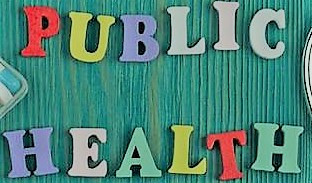The biggest threat to public health today.
Antimicrobial resistance (AMR) has become the largest concern and biggest threat to public health in recent years. Resistance to medications used to treat infections in bacteria, viruses, fungi, or parasites is known as antimicrobial resistance (AMR). This resistance raises the danger of illness transmission and complicates treating infections. Regular procedures and treatments become significantly risky in the absence of adequate antibiotics.
Define Antimicrobial Resistance:
Microorganisms resistant to the actions of medications meant to destroy them are said to exhibit antimicrobial resistance (AMR). This resistance grows as bacteria, viruses, fungi, or parasites evolve. Antibiotic-resistant strains endure and proliferate when exposed to them. These resistant organisms proliferate over time. As a result, treating infections is more difficult. AMR is a serious global danger to public health.
Reasons for Growing Concern About AMR:
Antibiotic abuse is turning AMR into a critical concern. The situation is exacerbated by overprescription for viral diseases like the common cold. Antibiotic resistance is another effect of using antibiotics in agriculture to encourage animal growth. The emergence of resistant strains is accelerated by this pervasive usage. The repercussions are dire, making it harder to control illnesses that were formerly curable.
The Effect on Contemporary Medicine:
The emergence of AMR has significant effects on contemporary medicine. Without effective antibiotics, common procedures like surgery and cancer treatments become riskier. Previously low-risk routine operations are increasingly more dangerous due to infection risks. Additionally jeopardized is the efficacy of therapies for chronic illnesses. Individuals with weakened immune systems are more susceptible to illnesses that become resistant.
AMR’s Economic Effects:
Healthcare systems bear a significant financial cost as a result of AMR. Longer hospital stays and more expensive medications are frequently needed to treat resistant illnesses. Further medical procedures raise expenses even further. Resources devoted to addressing AMR are taken away from other health issues. Both the public and private healthcare industries are impacted by this economic hardship. A robust healthcare system must be maintained by lowering AMR-related expenditures.
International Approaches to Address AMR:
AMR requires coordinated international action. To address the problem, the World Health Organization (WHO) has provided an action plan. Improving infection prevention and control strategies is a key component of this goal. More effective monitoring and prudent antibiotic usage are also essential elements. Nations are urged to create national action plans suited to their unique requirements. International cooperation is necessary for efficient AMR management.
Regional Initiatives to Lower AMR:
In the battle against AMR, local initiatives are essential. Healthcare professionals must abide by rules on the proper use of antibiotics. Public awareness initiatives can educate people about the risks associated with usage. Sterilization and hand washing are two effective infection control practices that help stop the spread of resistant illnesses. Local governments can help with these endeavors by implementing public health programs and policies. Participation from the community enhances the overall AMR response.
The function of innovation and research:
Research is essential to the fight against AMR. Researchers are trying to create novel antibiotics and complementary therapies. Improvements in diagnostics and medical technology can help with infection control. Research spending is essential to keep up with the development of resistant strains. Making fresh approaches to battling AMR guarantees that efficient therapies will always be accessible. To solve this problem, science must continue to advance.
What Each Person Can Do:
By acting responsibly, individuals can contribute to the reduction of AMR. Antibiotics should always be taken as directed by a medical practitioner. Take the medication as prescribed, even if your symptoms become better. Refrain from self-medication and utilizing over-the-counter antibiotics. Vaccinations and consistent hand washing are examples of basic hygiene practices that help avoid illnesses. Taking personal responsibility is essential to reducing the effects of AMR.
The Direction to Take:
To effectively address AMR, a multimodal strategy is required. For initiatives to be effective, global and local efforts must coincide. Improving infection control and encouraging the right use of antibiotics are essential. Putting money into innovation and research will help find long-term answers. Individual acts and public knowledge are equally crucial. It takes cooperation and dedication from all facets of society to combat AMR.
Conclusion:
Antimicrobial resistance is the biggest threat to public health today. The increase in resistant illnesses has been facilitated by the abuse and overuse of antibiotics. This problem impacts not only the efficacy of therapies but also the economy of healthcare systems and the safety of medical operations. Coordinated national, international, and local initiatives as well as personal accountability are needed to address AMR. Improvements in infection control, research funding, and the promotion of judicious antibiotic usage can all help to lessen this serious health risk.
AMR is a problem that needs to be addressed right now. The availability of effective medicines decreases as resistance grows. To maintain the effectiveness of antibiotics and safeguard public health for upcoming generations, the world needs to move quickly and forcefully.
I hope you like this if you want to know more about this topic; public health
more about health-related topics; link1
